Oct 28, 2025 10:47 AM
In Memoriam: Jack DeJohnette, 1942–2025
Jack DeJohnette, a bold and resourceful drummer and NEA Jazz Master who forged a unique vocabulary on the kit over his…
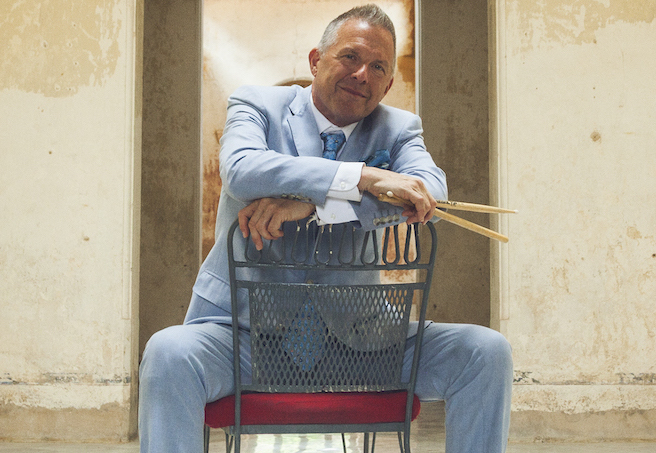
Always a sharp dresser, Farnsworth wears a pocket square given to him by trumpeter Art Farmer. “You need to look good if you want to hang around me,” Farmer told him.
(Photo: Osmel Portuondo Azcuy)When he was 12 years old, the hard-swinging veteran drummer Joe Farnsworth had a fateful encounter with his idol Max Roach, the bebop pioneer. Prior to that, Farnsworth had already been playing drums and attending jam sessions in and around his hometown of South Hadley, Massachusetts, thanks to his four older brothers, musicians all. As a budding young drummer, he had been emulating Buddy Rich and Sonny Payne of the Count Basie Orchestra. He used to play along with the Count’s “April In Paris.”
“Then my older brother John had me learn Charlie Parker’s version of ‘Slow Boat To China’ and ‘Chi Chi,’ with the great Max Roach on drums,” Farnsworth told me in a pair of recent Zoom interviews. “When I started hearing Max, that was like the big change in my life… (to) that style of music and drumming.
“Around that time, my brother John drove me to UMass-Amherst to see Roach give a master class. We came into the room, and there was a guy playing piano. It was just the three of us. I’m like, ‘Damn, is that Max Roach?’ Because I had never seen his face, and he was playing piano. Then he stopped playing and says, ‘What are you guys here for?’
“I said, ‘I’m here because I want to play like Max Roach.’ He didn’t answer; he just kept playing. About 10 minutes later, he asked, ‘Do you know who Billy Strayhorn is?’ I said no. He kept playing music — beautiful music — on the piano. He finally stops and says, ‘If you don’t know Billy Strayhorn, you don’t know anything about the drums.’
“I was 12, and I didn’t really know what he meant by that. But I know now. … He meant that … you first and foremost are a musician, and you need to learn about music … and open your mind and ears to all the possibilities. … Then you’re able to play music instead of just playing drums.”
Farnsworth’s jazz education continued with private lessons with the legendary drum teacher Alan Dawson and at William Paterson College. “But,” he says, “the school I wanted to go to was the school of Cedar Walton and George Coleman.” He headed to New York.
When you see Farnsworth on a gig, he is always dressed to the nines. It’s his way of paying homage to the jazz masters. “I’ve been doing it ever since I started making gigs in 1986. Art Blakey did it. McCoy. Miles. Charlie Parker. That was the thing to do. My first big gig was with Benny Golson. He always wore a suit. I did, too. Milt Jackson, George Coleman, Cedar Walton. I wanted to be like that.”
Coming out of the hard-bop tradition, Farnsworth, 57, has played with a formidable list of jazz masters, including Tyner, Walton, Golson, Coleman, Horace Silver, Harold Mabern. He toured with Diana Krall and spent 16 years with Pharoah Sanders. He is a charter member of the supergroup One for All with his former Paterson classmate Eric Alexander. In recent years he has helped nurture — and is sought out by — a younger generation of musicians, including pianist Emmet Cohen, in whose trio he plays, and the sensational young tenor player Sarah Hanahan.
Both Cohen and Hanahan are featured on his latest album, The Big Room (Smoke Sessions), his eighth as a leader. Rounding out the A-list of players is Joel Ross, vibraphone; Jeremy Pelt, trumpet; and Yasushi Nakamura, bass.
Farnsworth’s drumming is characterized by crispness; rhythmic clarity; melodicism; a sensitive, musicianly use of dynamics; and a bulletproof sense of swing. His impeccable technique has given him the freedom to celebrate a tradition that includes drummers from Roach to Roy Haynes, Billy Higgins and Tony Williams, while enjoying the freedom to go well beyond that tradition.
In his liner notes for Farnsworth’s 2020 album Time To Swing, drum master Billy Hart likens him to an orchestra conductor, writing, “Somehow the conductor keeps perfect time for 80 musicians without hitting anything. How does he do that? It’s a result of his knowledge of the music, and the enthusiasm that this knowledge gives him is what he shares with the rest of the orchestra. I think that’s what Farnsworth does.”
Talking by Zoom about his friend and colleague, Emmet Cohen said, “I think he’s one of the greatest ever. An absolute legend. He used to go down, week after week, and sit by Elvin Jones, Tony Williams, Billy Higgins and Louis Hayes, and would just absorb their musicality and their power. … It feels so good to be around him. And you know he’s got your back. I never imagined I’d have a friendship with someone 20 years my senior that would feel so kindred and overwhelmingly positive in my life.”
The younger players admire his discipline, an almost monastic dedication to the art form, which comes out in many ways: yes, the suit, tie, and pocket square; but also the way he takes care of his body and spirit. “It’s the standard that he holds for himself,” Cohen said. “Dressing. Running every day. Going to church no matter what the language or what country he’s in. Staying centered. I’ve never seen him falter. He’s been an enormous blessing in my life.”
South Hadley, Massachusetts, population 17,000, in the western part of the state, was never exactly the jazz capital of the world. Yet being the son of a high school band director, and with four older brothers who all played, Farnsworth’s life was filled with jazz.
“Listening to music was the biggest thing in my life,” he said. “It was really important to me. Still is. I used to love having listening parties with my brothers. We had thousands of records.
“I used to sleep with my oldest brother, David. He was the original drummer. He had a nice set of Ludwigs. He’d go off to school and say, ‘Don’t touch my drums.’ So, I’d look out the window until I couldn’t see him anymore, and I’d plop on the drums.”
The budding musician would go from room to room in the house in South Hadley, listening to his brothers’ favorites. With David, he would listen to the Temptations and O’Jays, but also the Buddy Rich and Basie bands. “The next room over was James’. He was a saxophone player and was into Sonny Stitt and Sonny Rollins. … John was a trombone player, so he liked Chicago, but he was also into Charlie Parker, J.J. Johnson, and Clark Terry. So, I’d go into that room and listen to that. I like to joke that it was like having my own mini 52nd Street.”
Dawson’s approach to teaching young drummers was to encourage a holistic approach to the music. It wasn’t just about the drumming; it was about really learning the tune, melody and lyrics, and playing what was best for it.
Farnsworth does the same with his own students. He recalled the first tune that he learned from Dawson was “Old Devil Moon.” “It was the J.J. Johnson record with Elvin Jones on drums. (He had me) play the melody. That was the first time that I would sing the melody while I was playing. And I remember him saying, ‘Well, the good thing is that you have a love for Max Roach.’ But the main part of the lesson was (him saying) that ‘you’ve got to learn how to sing the melody freely so you’re able to play more freely.’” In other words, instead of emulating Roach, Dawson wanted him to learn the song.
“For 40 years, I tried to play the perfect Max Roach solo. I wanted to be him and guess what? It never happens.” It’s only in recent years, Farnsworth said, that he stopped chasing Roach and his other drum heroes and concentrated on his own unique voice.
When he got to New York in 1986, he discovered the musician union phone book that belonged to his older brother John, who lived on 106th and Amsterdam Avenue. He started cold-calling his jazz heroes who lived in New York. Some of them hung up on him. But when he reached the “T” section, he dialed iconic bebop drummer Arthur Taylor, who agreed to take him on as a student.
“A.T. said, ‘You’re lucky you’re on time, because if you’re not on time you can’t play in time.’ The first few lessons we sat there and just listened to Sarah Vaughan sing.” Taylor told his young charge a story about how he was once playing a ballad, and the iconic Basie drummer Papa Jo Jones came up to him and hit him in the head.
“He said, ‘Hey, you little goober head, you sound terrible!’ And A.T. was like, ‘Hey, man, why’d you hit me in the head?’ And he says, ‘You don’t know the tune!’ And A.T.’s like, ‘Yo, come on, man, it’s just a ballad.’ But Papa Jo was right.” Farnsworth remembered that he and Taylor listened to Vaughan sing “Don’t Blame Me,” then talked about how, when Lester Young and Miles Davis were learning a ballad, they would listen to Sinatra sing it then Charlie Parker play it.
Like Dawson, Taylor encouraged the young drummer to learn the lyrics, saying, “If you want to be part of the glory, you gotta know the story,” and, “You can never be wrong if you know the song.”
What is “the big room,” the concept behind Farnsworth’s new album? It seems to have more than one meaning, describing a place where constraints on expression disappear, but also an approach to time.
Farnsworth has said, “Jackie McLean talked about being at such a height of greatness that you’re able to go into The Big Room, where there’s no furniture and no paintings on the walls. You’re able to arrange the room anyway that you want, but only a few people ever get there — greats like John Coltrane or Ornette Coleman. It’s like what, Roy Haynes said about playing with Coltrane — it’s freedom with discipline.”
Cohen thinks the concept also has to do with the way the masters talked about time. “Joe likes to call me ‘Emit,’ Cohen said, “because Joe’s teacher, Arthur Taylor, used to say, ‘It’s all about Emit’ — ‘time’ backwards. It comes down to the space between the quarter notes when you’re swinging.”
The sense of “freedom with discipline” is palpable on the record. Remarkably, it was tracked in a single day during a recording session on the stage of Smoke, the Upper West Side nightclub that spawned the label. The eight songs cover a wide spectrum, from post-bop burners like Hanahan’s opener “Continuance” and Cohen’s “You Already Know”; to altered blues (Pelt’s “All Said And Done”); pensive ballads (Joel Ross’ “What Am I Waiting For?”); and the triumphant boogaloo (Farnsworth’s “Prime Time”) that closes the album.
For Farnsworth, the music is never about ego or chops. It’s about being the best person you can be, on and off the stage.
“I remember meeting Billy Higgins and asking him why he smiled so much. ‘Smiling Billy Higgins,’ people called him. He told me he made changes so he could become happy, joyous and free. He changed his lifestyle, stopped doing certain things. Became Muslim, started listening to God. Freed himself from toxic relationships. Set healthy boundaries. Certain people he had to let go of.
“I was determined to be like that, but I didn’t know how. About 13 years ago, I decided to do the same thing — change my life. Being a father of three, I stopped hanging out after the gig, stopped drinking. I decided to become Catholic — I wasn’t anything before that. I started listening to a higher power.
“‘Listen to learn, and learn to listen’ — that was what Art Taylor taught me. I wanted to be happy, joyous, and free … to be a better father, a better drummer, and be of service to younger people.”
Farnsworth once toured with Benny Golson. Two legendary players, trombonist Curtis Fuller and trumpeter Art Farmer, joined the band for its final dates. “One night when Art played ‘I Remember Clifford,’ I noticed that Curtis started to cry. Little did I know that Art was dying of cancer at the time.
“Being on the road with these guys showed me the level of fellowship, commitment, love and respect that they had for each other. I learned just how big their hearts were. What I learned was that they were giants of men. The instruments (they mastered) were just by-products.
“Art gave me a pocket square to put in my jacket. He said, ‘Hey, man, you need to look good if you want to hang around me. Don’t embarrass me.’ To this day I wear it.” DB
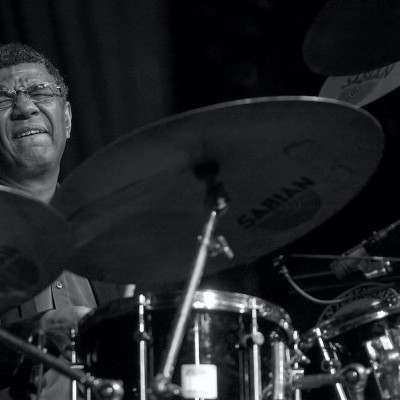
Jack DeJohnette boasted a musical resume that was as long as it was fearsome.
Oct 28, 2025 10:47 AM
Jack DeJohnette, a bold and resourceful drummer and NEA Jazz Master who forged a unique vocabulary on the kit over his…
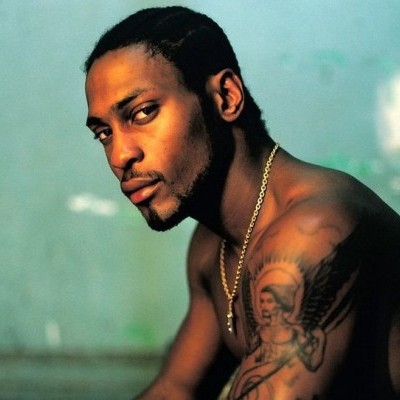
D’Angelo achieved commercial and critical success experimenting with a fusion of jazz, funk, soul, R&B and hip-hop.
Oct 14, 2025 1:47 PM
D’Angelo, a Grammy-winning R&B and neo-soul singer, guitarist and pianist who exerted a profound influence on 21st…
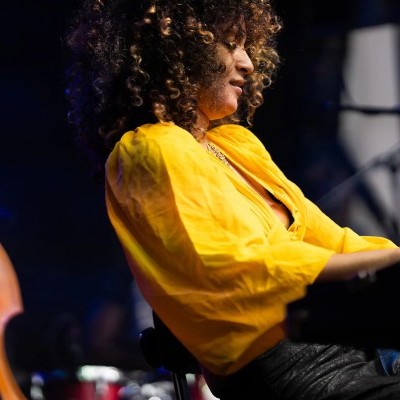
Kandace Springs channeled Shirley Horn’s deliberate phrasing and sublime self-accompaniment during her set at this year’s Pittsburgh International Jazz Festival.
Sep 30, 2025 12:28 PM
Janis Burley, the Pittsburgh International Jazz Festival’s founder and artistic director, did not, as might be…
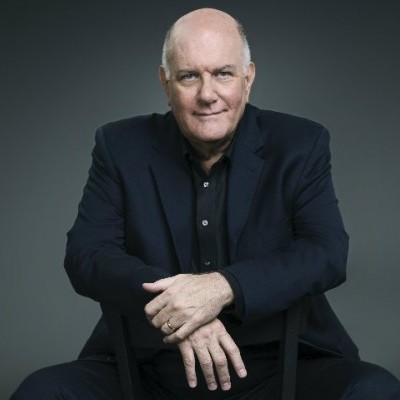
Jim McNeely’s singular body of work had a profound and lasting influence on many of today’s top jazz composers in the U.S. and in Europe.
Oct 7, 2025 3:40 PM
Pianist Jim McNeely, one of the most distinguished large ensemble jazz composers of his generation, died Sept. 26 at…
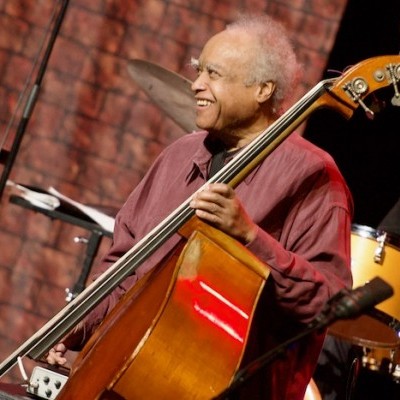
Drummond was cherished by generations of mainstream jazz listeners and bandleaders for his authoritative tonal presence, a defining quality of his style most apparent when he played his instrument unamplified.
Nov 4, 2025 11:39 AM
Ray Drummond, a first-call bassist who appeared on hundreds of albums as a sideman for some of the top names in jazz…